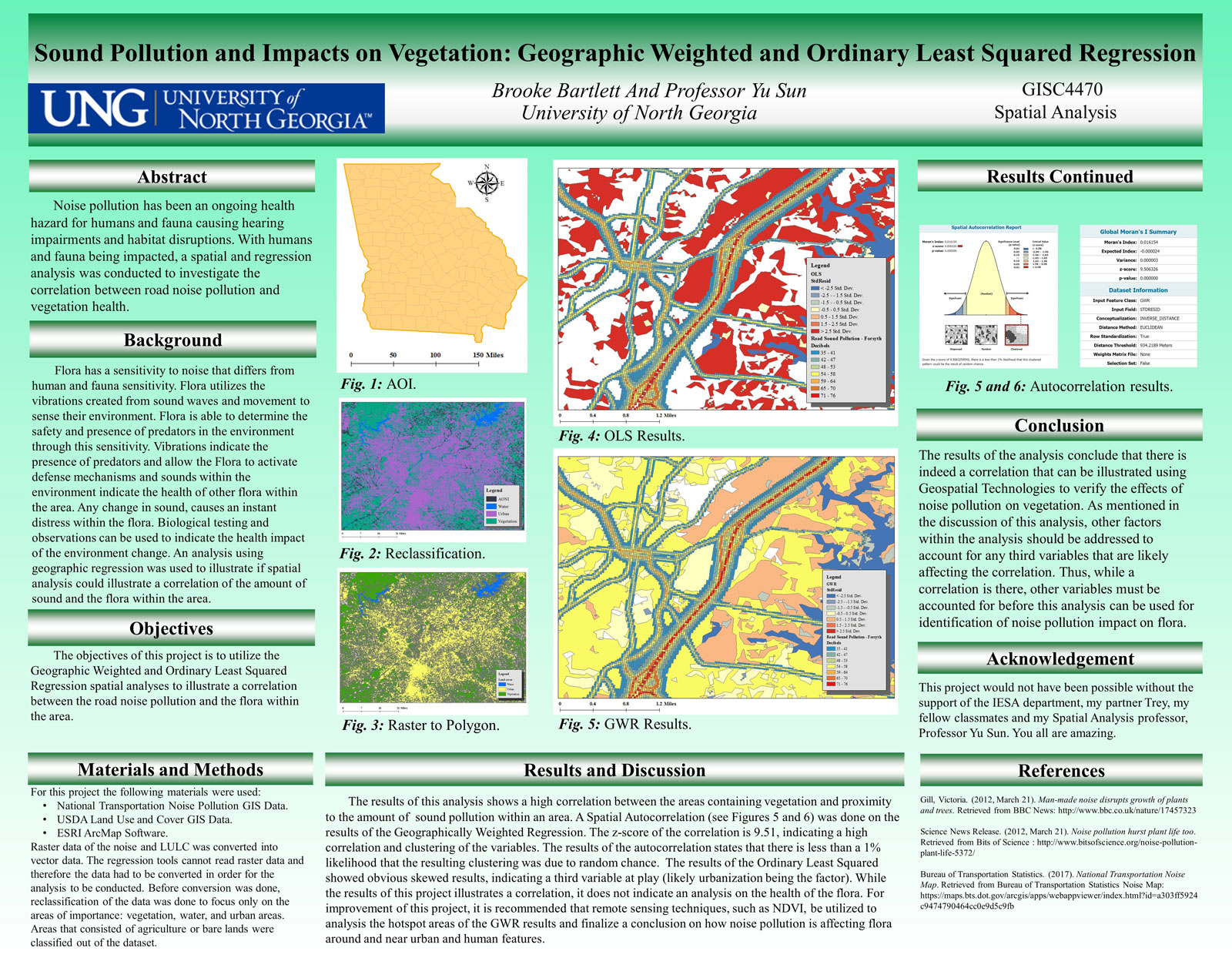Sound Pollution & Impacts On Vegetation: Geographic Weighted & Ordinary Least Squared Regression
Background
Organisms on earth have a variety of defense mechanisms that allow effective survival. Types of environmental stimuli trigger these defense mechanisms, which can be effective in protecting the organism, but detrimental if the defense mechanism causes unnecessary amounts of stress.
Flora has a sensitivity to noise that differs from fauna sensitivity. Flora utilizes the vibrations created from sound waves as a method to detect possible predators within the environment. These vibrations allow the Flora to activate defense mechanisms to guard against these predators. Excessive noise, however, may cause unnecessary stress and stimuli deprivation (deafness).
For this project, a regression analysis was conducted to illustrate a correlation between noise pollution and vegetation health and to show how excessive noise pollution causes detrimental effects on vegetation health. The focus area of vegetation health impact is Forsyth County, along Highway 400.
Authored by
Brooke Bartlett & Yu Sun
Materials
- Bureau of National Transportation Noise Pollution GIS Vector Data.
- USDA Land Use and Cover GIS Raster Data 2011.
- ESRI ArcMap 10.5 Software.

Discussion and Results
The results of this analysis shows a high correlation between the areas containing vegetation and proximity to the amount of noise pollution within the area. A Spatial Autocorrelation (see Figures 5 and 6) was done on the results of the Geographically Weighted Regression. The z-score of the correlation is 9.51, indicating a high correlation and clustering of the variables. The results of the autocorrelation states that there is less than a 1% likelihood that the resulting clustering was due to random chance. The results of the Ordinary Least Squared showed obvious skewed results, indicating a third variable at play (likely urbanization being the factor). While the results of this project illustrates a correlation, it does not directly illustrate the health impact of the vegetation along highway 400. For improvement of this project, it is recommended that remote sensing techniques, such as NDVI, be utilized to analysis the hotspot areas of the GWR results and finalize a conclusion on how noise pollution is affecting flora around, near urban and human features.
Conclusion
The results of the analysis conclude that there is a correlation that can be illustrated using Geospatial Technologies to verify the effects of noise pollution on vegetation. As mentioned in the discussion of this analysis, other factors within the analysis should be addressed to account for any third variables that are likely affecting the correlation. Thus, while a correlation is there, other variables must be accounted for before this analysis can be used for identification of noise pollution impact on flora.
References
Gill, Victoria. (2012, March 21). Man-made noise disrupts growth of plants and trees. Retrieved from BBC News: http://www.bbc.co.uk/nature/17457323
Science News Release. (2012, March 21). Noise pollution hurst plant life too. Retrieved from Bits of Science : http://www.bitsofscience.org/noise-pollution-plant-life-5372/
Bureau of Transportation Statistics. (2017). National Transportation Noise Map. Retrieved from Bureau of Transportation Statistics Noise Map: https://maps.bts.dot.gov/arcgis/apps/webappviewer/index.html?id=a303ff5924c9474790464cc0e9d5c9fb